본문
Eye Plastic Surgery

Tips for Double Eyelid Operation
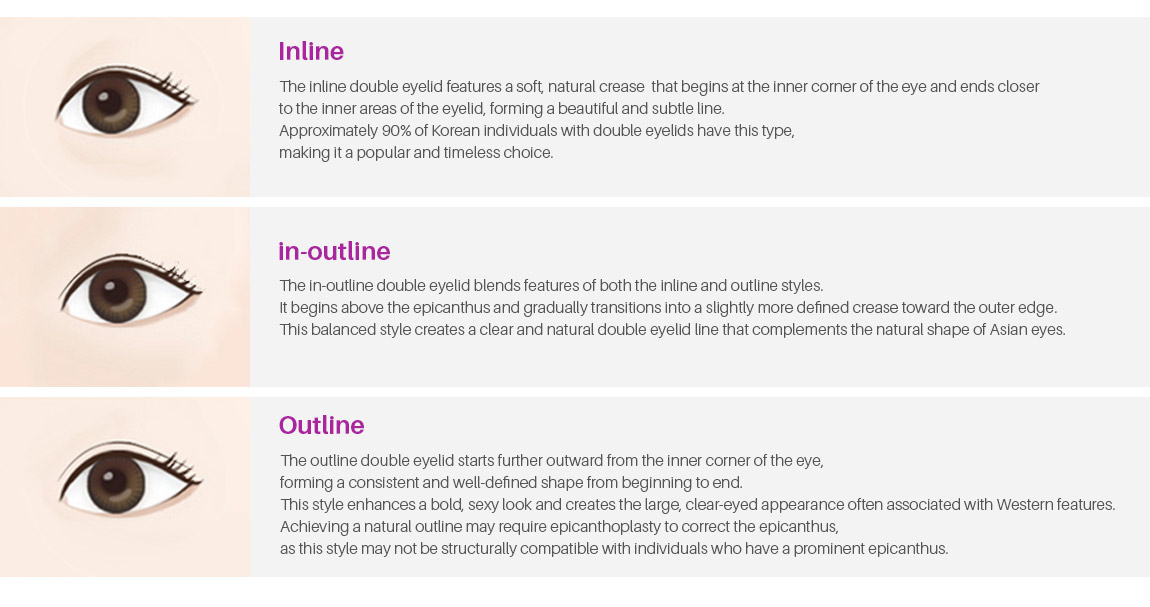
What is the Non-Incisional Double Eyelid Surgery?
The buried suture double eyelid surgery involves creating a double eyelid crease through natural adhesion by making small punctures without an incision.
This method leaves no visible scars, causes minimal swelling, and allows for a relatively short recovery period.
It creates a natural and defined double eyelid line with minimal risk of loosening over time.
Steps of Non-Incisional Double Eyelid Surgery in SAERO
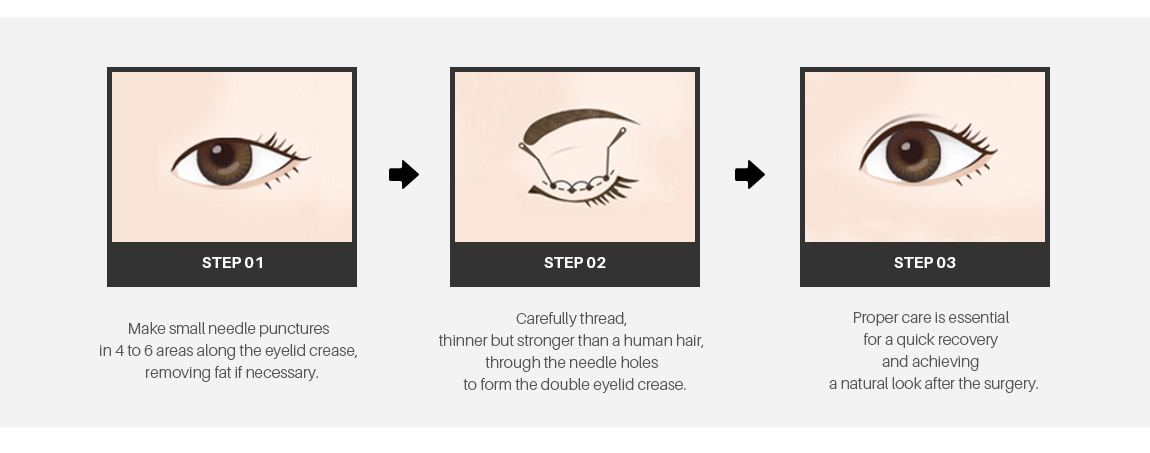
Advantages of SAERO’s Non-Incision Method

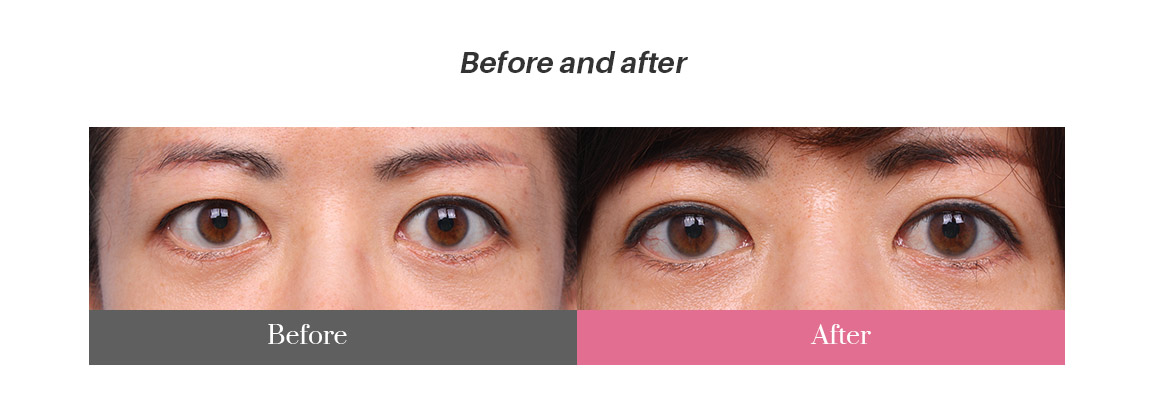
What is partial incision method?
Partial incision double eyelid surgery involves making a small 1 to 2 mm incision to remove unnecessary fat and muscle,
then anchoring the tissues to create a clear and natural eyelid line.
Compared to the buried suture method, this technique offers a lower chance of loosening and results in a more defined double eyelid.
Steps of Partial Incision Surgery in SAERO
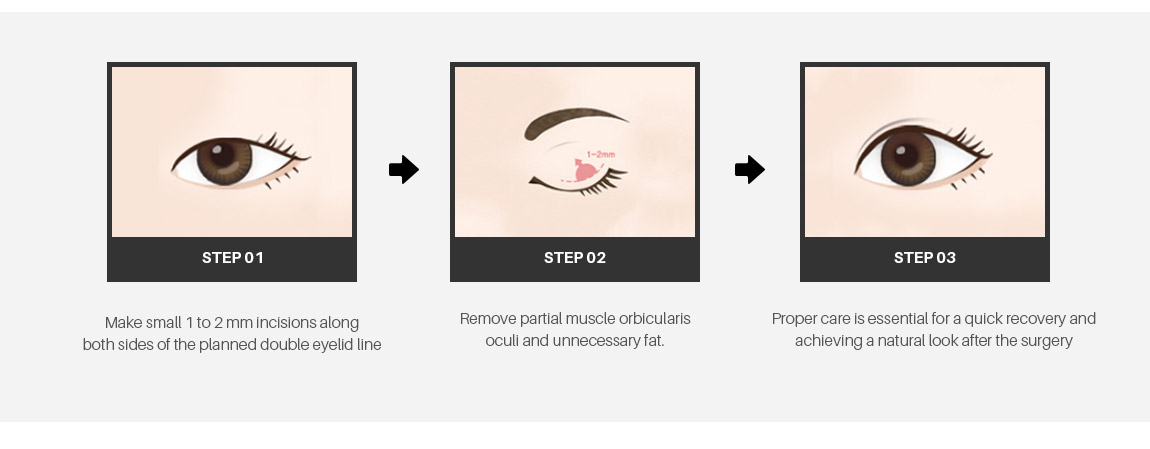
Advantages of SAERO’s Partial Incision Method

Steps of Incision Method in SAERO
The incision method involves making a direct incision when the eyelid has thick fat layers or sagging skin.
This technique removes unnecessary fat and muscle while anchoring muscular tissues and dermal layers to create clear and natural-looking eyes.
Although the recovery period is relatively longer,
it offers the advantage of a well-defined double eyelid line with a lower chance of loosening over time.
Steps of Incision Method in SAERO
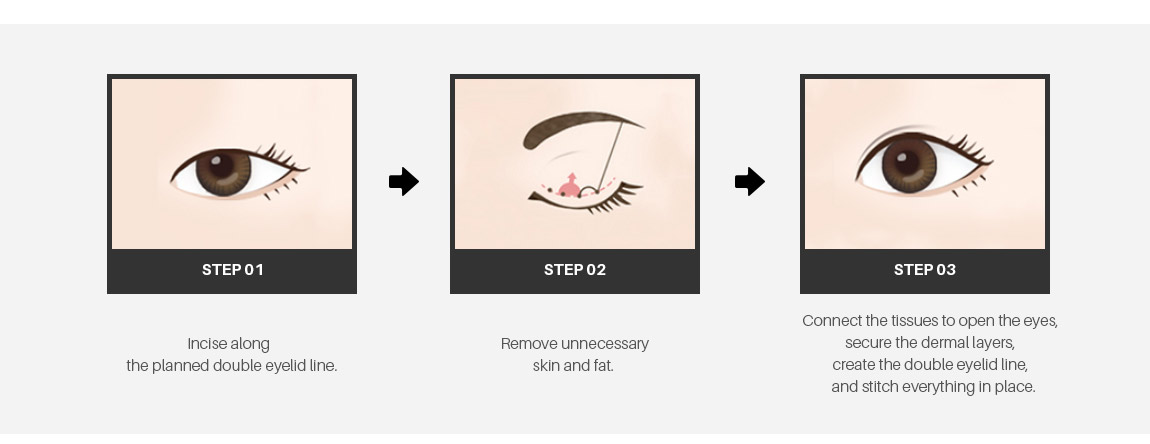
Advantages of SAERO’s Incision Method

What is Upper Blepharoplasty surgery?
When the upper eyelid sags and obstructs vision,
people often squint or glare to compensate,
which can lead to wrinkles forming on the forehead and an unnatural facial expression.
Upper blepharoplasty removes excess skin, fat, and muscle from the eyelids,
correcting the sagging and restoring a youthful,
clear eye line. This procedure not only enhances appearance but also improves comfort and function.
Steps of Upper Blepharoplasty in SAERO
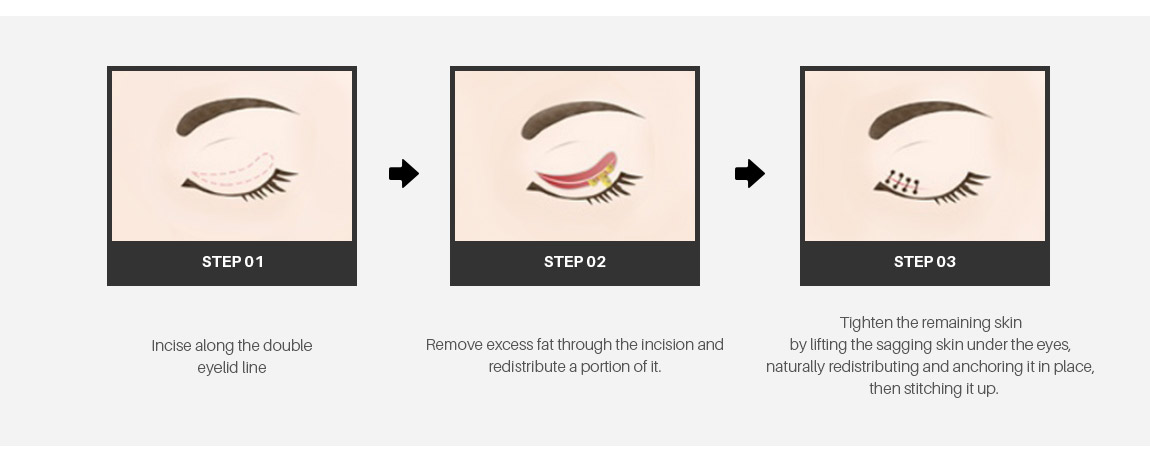
Solve narrowed sight and sagged skin and finalize young and refresh eyes.
Subjects for Upper Blepharoplasty

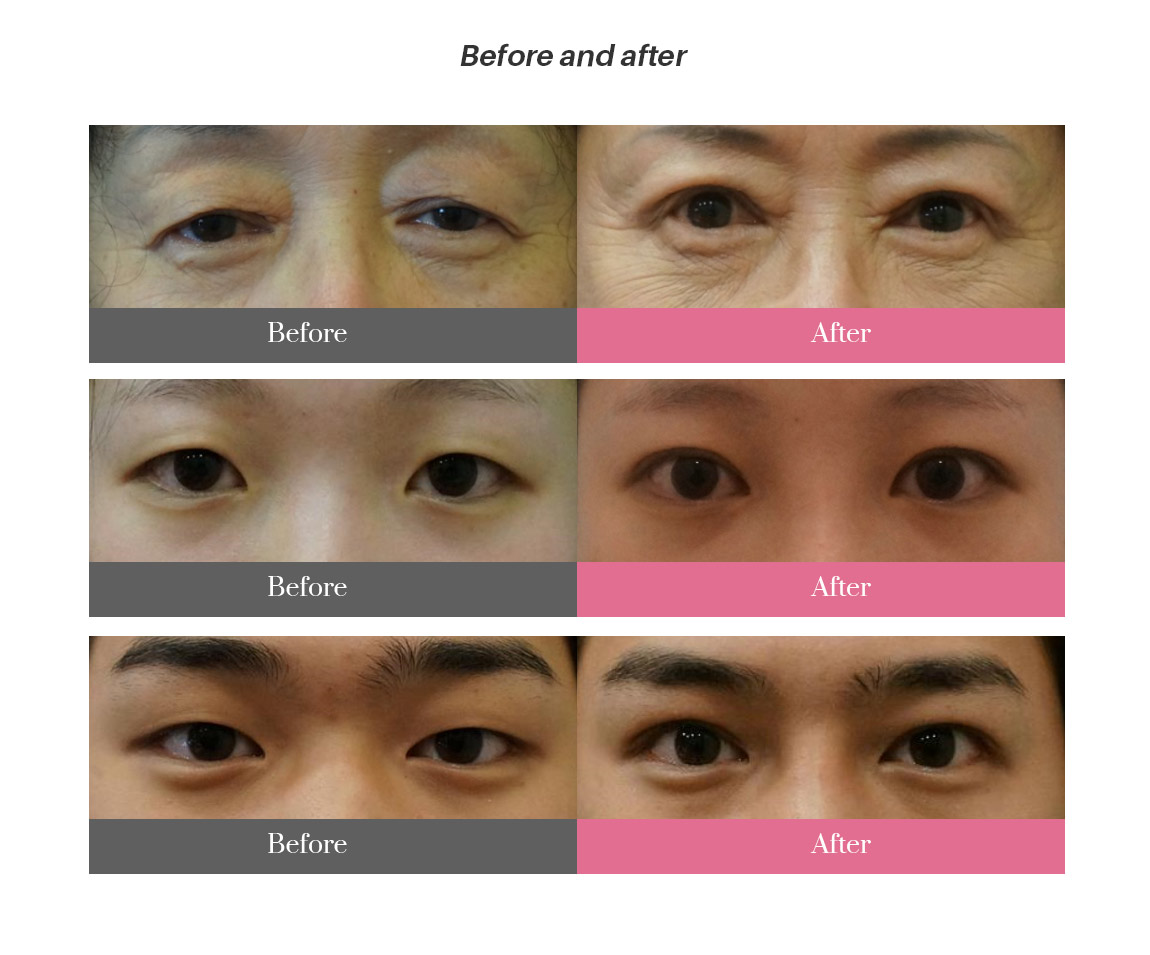
What is Lower Blepharoplasty surgery?
This surgery removes excess fat from beneath the eyes,
which causes protrusion, as well as addresses sagging due to lost skin elasticity.
The skin is tightened, and the fatty tissue is anchored in the correct position and redistributed for a more natural appearance.
For deepened areas under the eyes, combining this procedure with autologous fat transfer or filler can provide a synergistic effect,
enhancing the overall results.
Steps of Lower Blepharoplasty in SAERO
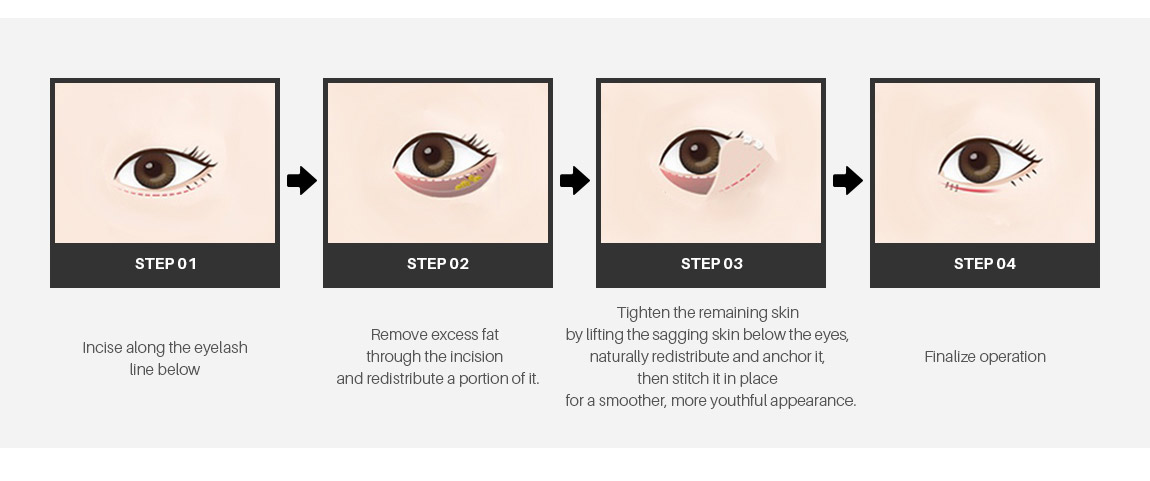
What is double eyelid revision surgery?
There are cases where patients are dissatisfied with the results of their previous double eyelid surgery or experience functional issues.
Revision surgery aims to correct these concerns and create a natural eyelid line.
It requires more advanced techniques and expertise than the initial procedure.
It is recommended to wait 6 months to 1 year after the first surgery,
once swelling has subsided and the final shape has settled, before undergoing a revision.
Steps of double eyelid revision in SAERO
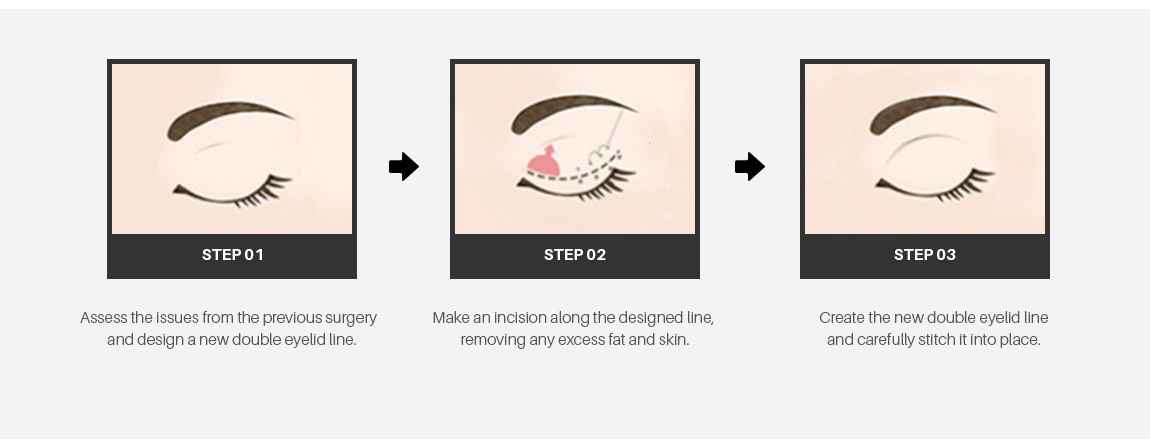
Careful operation is inevitable for accurate diagnosis of the current status and fulfillment of needs of each patient.
Subjects for double eyelid revision surgery






















